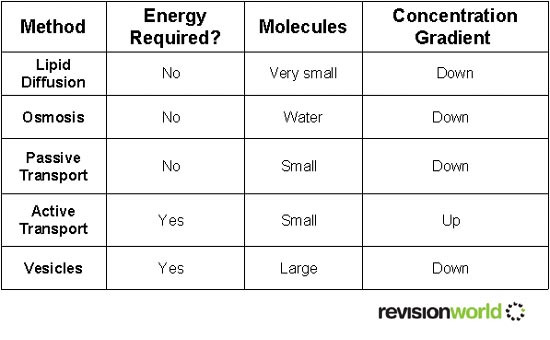Cell Transport
Cell Membrane
The Cell membrane is the most important organelle in an organism’s cell. It controls how substances move in and out of the cell.
5 methods for movement in and out of cell:
- 1) lipid diffusion
- 2) osmosis
- 3) passive transport
- 4) active transport
- 5) vesicles
Image
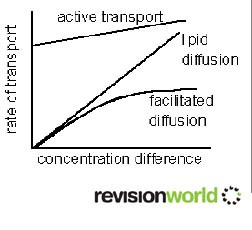
Lipid Diffusion
- Carried out by very small molecules – H2O, O2, CO2
- No energy is involved
- Substances move down concentration gradient
- Cannot be controlled by cell
Image

Osmosis
- Diffusion of water (abundant in cells) across a membrane
- Higher concentration of solution = less water molecules
- Net flow of water diffuses down concentration gradient
- Water moves from dilute to concentrated solution
Image
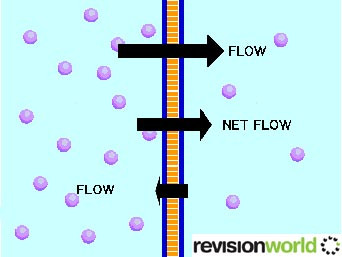
Solution Types
Image
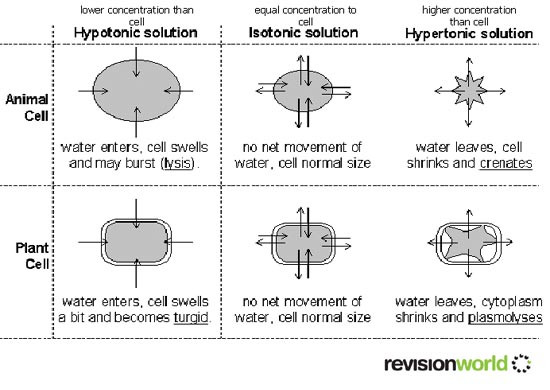
Passive Transport
- Transport of substances across a membrane by a trans-membrane protein molecule
- Transport proteins are often specific to one molecule
- No energy is involved
- Substances move down concentration gradient
Image
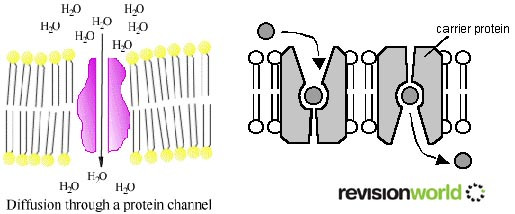
Channel proteins
- form channel in membrane which is filled with water
- ions diffuse across the membrane
- many channels can be opened or closed
Carrier proteins
- flip around so that only one side of membrane is open
- high concentration: substance binds
- low concentration: substance is released
Active Transport
- Protein pump molecule “pumps” substances across membrane
- Molecule of substance binds to protein and is then released on opposite face
- Each molecule fits a particular protein pump
- Energy is required; substances move up concentration gradient
Vesicles
Move large molecules in and out of cells e.g. proteins, polysaccharides, nucleotides
- In to cell: endocytosis
- Out of cell: exocytosis
Cell Transport Summary
Image
